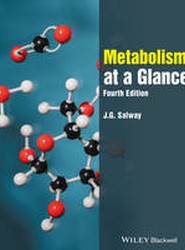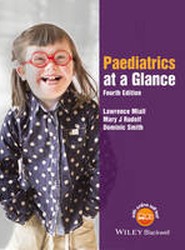(To see other currencies, click on price)
MORE ABOUT THIS BOOK
Main description:
Widely recognised as
the best starting point for pharmacology study, the internationally best–selling
Medical Pharmacology at a Glance is an ideal companion for all students of the health sciences.
Key principles are supported by coloured schematic diagrams – invaluable as both an introduction to medical pharmacology, and revision in the run–up to pharmacology exams.
Revised and thoroughly updated throughout, and reflecting changes to the content and assessment methods used by medical schools, Medical Pharmacology at a Glance:
-
Introduces the basic principles of drug action, interaction, absorption and excretion
- Bases chapters on diseases and syndromes, for clinically–focused learning
- Includes references to the pathophysiology of disease, to aid understanding of drug choice and action
- Indicates the therapeutics of choice for specific disorders and conditions
- Features cross references between discussion of drug classes and diseases
- Includes self–assessment cases studies with full answers, for revision and review
- Features a new chapter on immunosuppressants and antirheumatoid drugs
Now includes a brand new companion website, with cases and fully downloadable flashcards, at www.ataglanceseries.com/pharmacology
Back cover:
Widely recognised as
the best starting point for pharmacology study, the internationally best–selling
Medical Pharmacology at a Glance is an ideal companion for all students of the health sciences.
Key principles are supported by coloured schematic diagrams – invaluable as both an introduction to medical pharmacology, and revision in the run–up to pharmacology exams.
Revised and thoroughly updated throughout, and reflecting changes to the content and assessment methods used by medical schools, Medical Pharmacology at a Glance:
-
Introduces the basic principles of drug action, interaction, absorption and excretion
- Bases chapters on diseases and syndromes, for clinically–focused learning
- Includes references to the pathophysiology of disease, to aid understanding of drug choice and action
- Indicates the therapeutics of choice for specific disorders and conditions
- Features cross references between discussion of drug classes and diseases
- Includes self–assessment cases studies with full answers, for revision and review
- Features a new chapter on immunosuppressants and antirheumatoid drugs
Now includes a brand new companion website, with cases and fully downloadable flashcards, at www.ataglanceseries.com/pharmacology
Contents:
Preface, 7
Acknowledgements, 7
How to use this book, 7
Further reading, 7
1 Introduction: principles of drug action, 8
2 Drug receptor interactions, 10
3 Drug absorption, distribution and excretion, 12
4 Drug metabolism, 14
5 Local anaesthetics, 16
6 Drugs acting at the neuromuscular junction, 18
7 Autonomic nervous system, 20
8 Autonomic drugs acting at cholinergic synapses, 22
9 Drugs acting on the sympathetic system, 24
10 Ocular pharmacology, 26
11 Asthma, hay fever and anaphylaxis, 28
12 Drugs acting on the gastrointestinal tract I: peptic ulcer, 30
13 Drugs acting on the gastrointestinal tract II: motility and secretions, 32
14 Drugs acting on the kidney: diuretics, 34
15 Drugs used in hypertension, 36
16 Drugs used in angina, 38
17 Antiarrhythmic drugs, 40
18 Drugs used in heart failure, 42
19 Drugs used to affect blood coagulation, 44
20 Lipid–lowering drugs, 46
21 Agents used in anaemias, 48
22 Central transmitter substances, 50
23 General anaesthetics, 52
24 Anxiolytics and hypnotics, 54
25 Antiepileptic drugs, 56
26 Drugs used in Parkinson s disease, 58
27 Antipsychotic drugs (neuroleptics), 60
28 Drugs used in affective disorders: antidepressants, 62
29 Opioid analgesics, 64
30 Drugs used in nausea and vertigo (antiemetics), 66
31 Drug misuse and dependence, 68
32 Non–steroidal anti–infl ammatory drugs (NSAIDs), 70
33 Corticosteroids, 72
34 Sex hormones and drugs, 74
35 Thyroid and antithyroid drugs, 76
36 Antidiabetic agents, 78
37 Antibacterial drugs that inhibit nucleic acid synthesis: sulphonamides, trimethoprim, quinolones and nitroimidazoles, 80
38 Antibacterial drugs that inhibit cell wall synthesis: penicillins, cephalosporins and vancomycin, 82
39 Antibacterial drugs that inhibit protein synthesis: aminoglycosides, tetracyclines, macrolides and chloramphenicol, 84
40 Antifungal drugs, 86
41 Antiviral drugs, 88
42 Drugs acting on parasites I: helminths (worms), 90
43 Drugs acting on parasites II: protozoa, 92
44 Drugs used in cancer, 94
45 Immunosuppressants and antirheumatoid drugs, 96
46 Poisoning, 98
47 Adverse drug reactions, 100
Case studies and questions, 102
Answers, 104
Index, 108
PRODUCT DETAILS
Publisher: John Wiley & Sons Ltd (Wiley–Blackwell)
Publication date: March, 2012
Pages: 120
Dimensions: 217.00 x 274.00 x 5.94
Weight: 370g
Availability: Not available (reason unspecified)
Subcategories: Diseases and Disorders, Pharmacology
From the same series


























































